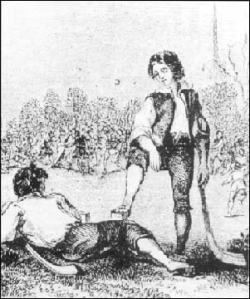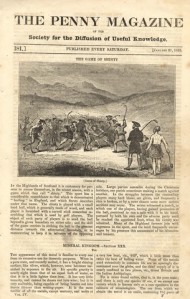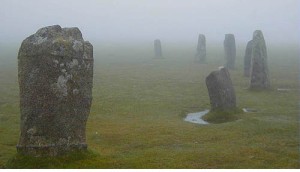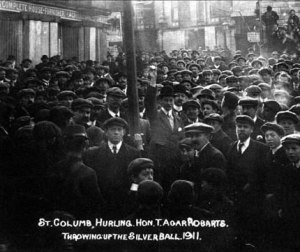Blog Archives
13. Celtic Art: Ball games of the ancient Celts
Meticulously adorned and varnished, with leather hand grips and even little hooks to hang them up by when not in use, they date back to 1845 and we are reliably informed that one of them belonged to somebody whose mother had not thought things through properly before baptising her son Thomas Thomas.
 Much has been written about the antiquity of hurling in Ireland. It is said to date back over a thousand years, and is mentioned in ancient tales about the Battle of Moytura, the exploits of legendary heroes Cuchulainn and Finn MacCool, and the lives of various saints. But much of this is based on late 19th century attempts to romanticise the sport’s role in Irish cultural heritage, whereby as AB Gleason writes “translations rendered otherwise simple and often unaccompanied terms for ball, stick, game, goal or even hoop by the catch-all of hurling.” It’s not really clear whether the likes of Cuchulainn’s ‘cluichi puill’ (‘hole-game’) had anything to do with hurling at all.
Much has been written about the antiquity of hurling in Ireland. It is said to date back over a thousand years, and is mentioned in ancient tales about the Battle of Moytura, the exploits of legendary heroes Cuchulainn and Finn MacCool, and the lives of various saints. But much of this is based on late 19th century attempts to romanticise the sport’s role in Irish cultural heritage, whereby as AB Gleason writes “translations rendered otherwise simple and often unaccompanied terms for ball, stick, game, goal or even hoop by the catch-all of hurling.” It’s not really clear whether the likes of Cuchulainn’s ‘cluichi puill’ (‘hole-game’) had anything to do with hurling at all.
 Nevertheless, a longer history of stickball games can be testified in Ireland than most other western cultures, and the pre-Norman conquest Brehon Laws included ‘judgements on games’ (‘meallbreatha’) for such issues as blood being shed by boys playing games not to be a punishable offence and rules for the property and design of the stick, or ‘camán’. However, it is again not certain that these games were early forms of hurling.
Nevertheless, a longer history of stickball games can be testified in Ireland than most other western cultures, and the pre-Norman conquest Brehon Laws included ‘judgements on games’ (‘meallbreatha’) for such issues as blood being shed by boys playing games not to be a punishable offence and rules for the property and design of the stick, or ‘camán’. However, it is again not certain that these games were early forms of hurling.
The Statutes of Kilkenny stated in 1366 that men could not “use the plays which men call horlinges, with great sticks and a ball upon the ground” and the Galway Statutes of 1527 stated that they could “at no time to use ne occupy ye hurling of ye litill balle with the hookie sticks.” These bans are often given as the reason for hurling’s slow development, but were actually applied to English settlers rather than Irishmen, and there is very little support for the idea that the English wished to outlaw the Irish custom – and condemnations of the use of the ‘shillelagh’, the traditional Irish fighting stick, probably had little to do with a relatively harmless sport.
The 18th and early 19th centuries were hurling’s golden age. It was to the Irish what cricket was to the English, and there are copious reports of grand matches being played, even between rival counties. This was unquestionably hurling in the purest sense, played by teams into opposing goals, such as Joseph Strutt’s admiration in 1801 of how players “would catch up the ball upon the bat and often run with it for considerable time, tossing it occasionally from the bat and recovering it again.”
 There was concern about some hurling matches leading into riots, but as Eoin Kinsella writes “at no stage in Irish history does hurling appear to have been subjected to outright suppression.” Nevertheless, as the 19th century wore on, hurling declined, and although many factors, such as the famine and British rule, have been offered as reasons, the most likely is that the new craze for football simply sent hurling out of fashion.
There was concern about some hurling matches leading into riots, but as Eoin Kinsella writes “at no stage in Irish history does hurling appear to have been subjected to outright suppression.” Nevertheless, as the 19th century wore on, hurling declined, and although many factors, such as the famine and British rule, have been offered as reasons, the most likely is that the new craze for football simply sent hurling out of fashion.
At the same time, while the different forms of football were standardised as soccer and rugby, the same happened with such traditional British stickball games as bandy, hurley and shinty. The Dublin University Hurley Club formed in 1870 was clearly playing by the new English rules, which forbade all playing of the ball in the air and included on offside rule.
 But there were diehards that condemned what the Irish Sportsman described in 1883 as something that had changed “the swiping game of the savage to a scientific recreation which may be indulged by anyone without being in constant dread of having one’s brains dashed out.” The most outspoken critic of all was Michael Cusack, who founded the Metropolitan Hurling Club in 1883 and experimented with ideas of his own. Although clearly influenced by what had happened in English hockey, Cusack’s game maintained the elements of what he called “the manliest game ever played by any branch of humankind,” and despite difficult beginnings would eventually lead to the formation of the GAA.
But there were diehards that condemned what the Irish Sportsman described in 1883 as something that had changed “the swiping game of the savage to a scientific recreation which may be indulged by anyone without being in constant dread of having one’s brains dashed out.” The most outspoken critic of all was Michael Cusack, who founded the Metropolitan Hurling Club in 1883 and experimented with ideas of his own. Although clearly influenced by what had happened in English hockey, Cusack’s game maintained the elements of what he called “the manliest game ever played by any branch of humankind,” and despite difficult beginnings would eventually lead to the formation of the GAA.
Around the mid-19th century, such comments as “shinty in Scotland, hockey in England and hurling in Ireland appear to be very much the same out-of-door sport”, that one from 1842, were commonplace. The differences between Irish games and the shinty, camanachd or hails played for centuries in Scotland would have been very blurred until proper rules were written for the respective codes towards the end of the century, and they probably shared a common history.
Most of the legendary origins described in the Book of the Club of the True Highlanders (1881), including the one that the game was introduced to Ireland by the members of Noah’s family, are rejected by the sport’s senior expert Dr Hugh D MacLennan as “pseudo-scholarly balderdash.” The oldest known true reference was a ban on “golf, carrict, shinnie” in 1589, and from then on there are various references to the game, and by the 19th century a stick called a ‘clacken’ was carried by almost every Scottish schoolboy.
 By the late 19th century, Scottish emigrants had even spawned a sizeable shinty community in England, but whereas Ireland rejected soccer and rugby, Scotland embraced the games and as good as adopted them as its own, and by the turn of the century, shinty was almost entirely limited to the Highlands. Although much less widespread than hurling, the two nations still play an annual game using composite rules today.
By the late 19th century, Scottish emigrants had even spawned a sizeable shinty community in England, but whereas Ireland rejected soccer and rugby, Scotland embraced the games and as good as adopted them as its own, and by the turn of the century, shinty was almost entirely limited to the Highlands. Although much less widespread than hurling, the two nations still play an annual game using composite rules today.
The two sports are almost certainly related to the ‘cammag’ played on the Isle of Man, which JJ Joughin was already referring to in the past tense when he reminisced about the game in 1916, although it has recently been revived as Boxing Day tradition.
 Wales had its own variant in the form of ‘bando’, which disappeared in the 19th-century, with the arrival of rugby from England largely to blame. The Welsh infatuation with rugby may well have had something to with the local tradition of a game called ‘cnapan’ that shared many of its features. It was described extensively by the historian George Owen in 1603, cross-country football where the wooden ball was hurled forwards “towards the country he playeth for … in the furie of the chase they respect neither hedge, ditch, pale or walle, hille, dale, bushes, river or rock or any other impediment.”
Wales had its own variant in the form of ‘bando’, which disappeared in the 19th-century, with the arrival of rugby from England largely to blame. The Welsh infatuation with rugby may well have had something to with the local tradition of a game called ‘cnapan’ that shared many of its features. It was described extensively by the historian George Owen in 1603, cross-country football where the wooden ball was hurled forwards “towards the country he playeth for … in the furie of the chase they respect neither hedge, ditch, pale or walle, hille, dale, bushes, river or rock or any other impediment.”
Different players had different roles, and although the presence of some players on horseback would look somewhat out of place nowadays, many of the characteristics of chapan predate William Webb Ellis’ supposed creation by more than 300 years.
Games were still being recorded at Neath in 1884 and even at Llandysul in 1922, but despite a short-lived attempt to revive the tradition in the 1980s, ‘cnapan’ is now largely forgotten, and rugby has as good as been adopted as the new national sport of Wales.
It would seem that Cornish hurling (‘hyrlîan’ in Cornish) had more to do with Welsh chapan than its Irish namesake. It too was a rugby-like game and was extensively described by Robert Carew in 1602. It was played either ‘to goales’ or ‘to the country’. In the former teams of about twenty players competed on a clearly demarcated field and “some indifferent person throweth up the ball, the which whosoever can catch and cary through his adversaries goal hath wonne the game.” It involved plenty of feisty wrestling, but as opposed to the view of medieval football being unruly and chaotic, Carew mentions that the players had specific positions, including “a couple of their best stopping hurlers” to guard the goals, and “the hurlers are bound to the observation of many lawes,” including one that “he must deale no fore-ball, viz, he may not throw it to any of his mates standing nearer the goale then himself.” In other words, no forward passing – which is basically rugby! Any violations of the many laws, and the other team had the right to punch the offender!
 When hurling ‘to the country’, two or more different villages played each other, and the idea was to get the silver ball back to a certain landmark in their respective hometowns. Here there was “neyther comparing of numbers nor matching of men” and the whole thing was “more diffuse and confuse” as they battled to get the ball home by whatever means they could and over whatever terrain they found in their way. It was “a play verily both rude & rough, and yet such, as is not destitute of policies, in some sorts resembling the feats of warre” as players were strategically stationed.” And like in the Welsh game, some players rode on horseback. At the end of the day the players returned home “with bloody pates, bones broken and out of joynt, and such bruses as to serve to shorten their daies, yet al is good play, and never attourney nor crowner troubled for the matter.”
When hurling ‘to the country’, two or more different villages played each other, and the idea was to get the silver ball back to a certain landmark in their respective hometowns. Here there was “neyther comparing of numbers nor matching of men” and the whole thing was “more diffuse and confuse” as they battled to get the ball home by whatever means they could and over whatever terrain they found in their way. It was “a play verily both rude & rough, and yet such, as is not destitute of policies, in some sorts resembling the feats of warre” as players were strategically stationed.” And like in the Welsh game, some players rode on horseback. At the end of the day the players returned home “with bloody pates, bones broken and out of joynt, and such bruses as to serve to shorten their daies, yet al is good play, and never attourney nor crowner troubled for the matter.”
It was also common for Cornishmen to play against the neighbouring county of Devonshire, such as one match arranged in 1648, and as late as 1922, the events reported at the Great Torrington Revel included a game of what was called ‘out-hurling’, although it was probably only played by an enthusiastic few keen to maintain a largely forgotten folk tradition.
 Cornish hurling had its heyday in the 17th century, with Oliver Cromwell even watching a game played in Hyde Park in 1654, and still existed in the 18th century, with author Daniel Defoe saying that he saw nothing in something “the Cornish men value themselves much upon … a sort of evidence that they were once a kind of barbarians.” But by 1846, Richard Edmunds was describing it as something that had not been played since “about a century ago” in all but a handful of towns because of “the many accidents that usually attended the game.”
Cornish hurling had its heyday in the 17th century, with Oliver Cromwell even watching a game played in Hyde Park in 1654, and still existed in the 18th century, with author Daniel Defoe saying that he saw nothing in something “the Cornish men value themselves much upon … a sort of evidence that they were once a kind of barbarians.” But by 1846, Richard Edmunds was describing it as something that had not been played since “about a century ago” in all but a handful of towns because of “the many accidents that usually attended the game.”
Helston, Germoe, St Ives and Newquay all played the game in Edmunds’ day, but the hurling at St Columb was by far the biggest event, where “the shops being closed and businesses suspended, many hundreds of persons of all ranks from the town and country are assembled in the streets waiting for the hurling of the ball.” And although more timid forms of hurling have been revived recently in St Ives and Bodmin, even today St Columb is Cornwall’s famous hurling capital, where the tradition, uninterrupted for at least five hundred years and probably many more, has been maintained. On two weekends each March, the Townsmen and the Countrymen compete to get the silver ball to the same two granite goals that have been used for centuries, the base of a Celtic cross and a shallow trough, although the game can also be won by carrying the ball over the parish boundary.
Click here to buy the book and read the whole story.
14. BANDY ON THE RUN: More on the origins of the hockey codes
